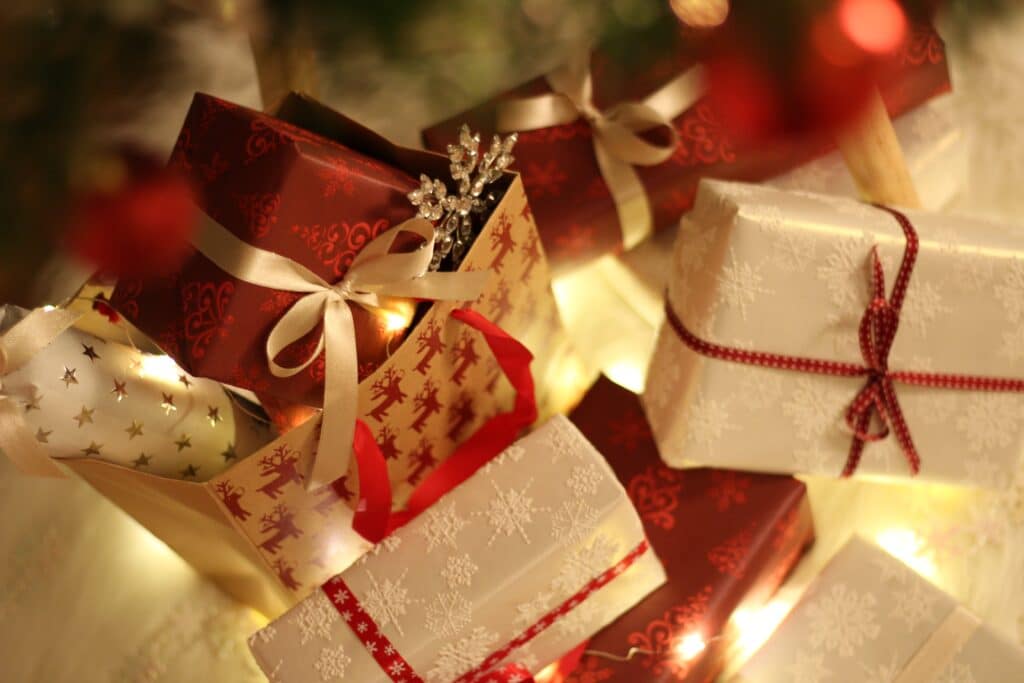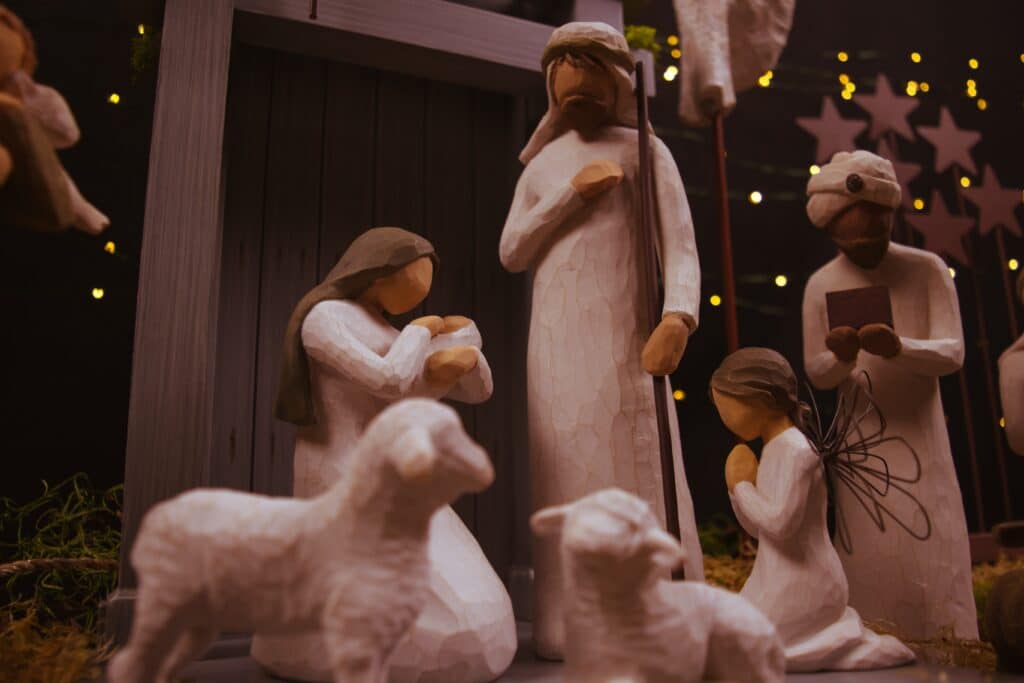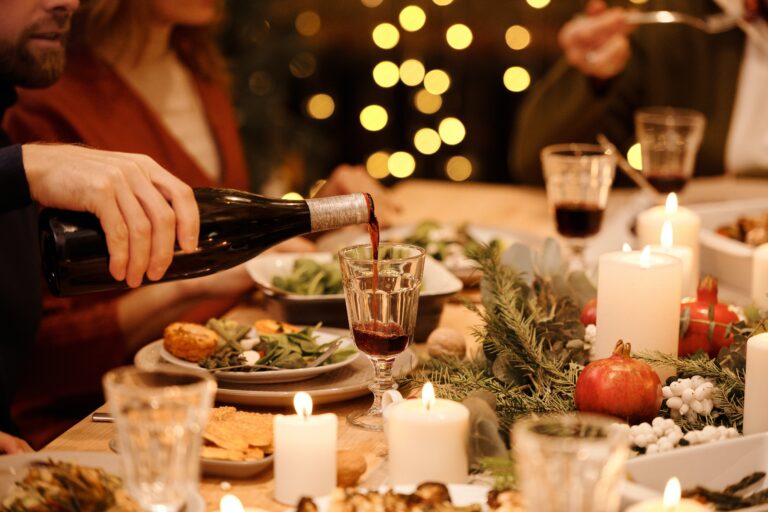When it comes to the variety of celebrations that people can take part in throughout the year, December is definitely packed with several. One of the most beautiful parts of holiday celebrations all over the world is that they mostly all have a common theme: plenty of food, music, and time with family—Noche Buena is no different. Our team here at Remitly put together this guide about Noche Buena and its rich traditions to share with you.
Christmas Eve, or Noche Buena, is largely celebrated on December 24 by many countries in Latin America, Spain, the Philippines, and Europe.
In Mexico and the Philippines, Noche Buena celebrations start in the afternoon and last until night (and sometimes into Christmas Day morning). This festival commemorates Catholicization in the Philippines and Latin America until the late 17th century. Where Noche Buena is widely celebrated in the Latinx, Hispanic, and Filipino communities, they each have their own cultural traditions that are unique to their specific area.
Noche Buena in Latin America
By December 8, the Feast of the Immaculate Conception, Latin American streets, businesses, and residences are decorated with Christmas trees. Portuguese traditions influence Brazil’s Christmas celebrations, from nativity scenes to Los Pastores. Cotton balls represent snow on trees, and watch out for the shepherdess and thief after baby Jesus!
Noche Buena plants and colorful flowers in Costa Rica’s tropical climate decorate homes and nativity scenes. After the midnight mass, a traditional Noche Buena Christmas meal of tamales wrapped in plantain leaves with chicken and pork, rum punch, and eggnog (Coquito) is served.
There may be a BBQ, pan dulce, or panettone cake for dessert, fireworks, and globos paper lanterns during Argentine and Uruguayan meals. Families build Nativity scenes with dyed sawdust in Guatemala, where ethnic groups celebrate different Christmases.
Dominos is popular in Caribbean countries like Cuba, Puerto Rico, and the Dominican Republic, while Mexico and Guatemala have several Nascimento (birth of Jesus) nativity scenes with life-size people. A fun game is to find the hidden Jesus figurine in a Rosca de Reyes or Three Kings Cake for Epiphany in Mexico on January 6.
Nochebuena in Spain
Nochebuena in Spain is deep-rooted, as the multiple celebrations stem from religion and Spanish influences. Catholicism, which celebrates Christmas as Jesus Christ’s birthday, arrived in the Americas in the late 1400s from Spain. Some Christians attend church for nine nights before Christmas Eve or the Dec. 25 midnight service to celebrate Christ’s birth.
Like any big celebration, food is a large part of Nochebuena. Spain traditionally served Pavo Trufado de Navidad and Pularda Asada, truffle-stuffed turkey, and roasted fowl.
Today, Spanish Christmas food includes cured meats, cheeses, tapas, soups, and a range of meat and seafood for mains, which typically pairs with cava or Spanish wines. And don’t forget dessert: a selection of Turrón, polvorones, and mazapán to finish.
After eating, go to church for La Misa Del Gallo or midnight mass. The holiday’s main focus is the church’s unique community spirit.
From buying lottery tickets to kickstart the season to waiting for Tió de Nadal instead of Santa, Spain has always had fun and festive traditions for celebrating Nochebuena.
Filipino Noche Buena
Although the festival has traditionally been associated with Latinx people, Noche Buena Philippines has also been celebrated for generations. Philippine colonization began in the 1500s and lasted over three centuries, like the Americas. Religion has survived various cultures’ influences on Philippine culture.
Wondering if food is another main event for Filipino Noche Buena? You guessed it… YES! Partygoers enjoy traditional dishes, including tsokolate (hot chocolate), sotanghon soup (hot noodle soup), and hamonado (chicken or pork marinated in pineapple).
Two additional popular Philippine Christmas dishes are bibingka and puto bumbong. Often served together, puto bumbong is a Filipino steamed rice cake prepared with pirurutong, a purple-colored ancestral sticky rice needing no food coloring to get its deep purple look. Bibingka is eaten alongside puto bumbóng as a snack after the nine-day Simbang Gabi (‘Night mass,’ the Filipino counterpart of Misa de Gallo).

Christmas Eve in Europe
There are many common themes and traditions among Latin American and European Christmas celebrations—big feasts, Midnight Mass, and a focus on Christmas Eve. Similar to how different areas of Latin America have slight variations, different countries within Europe do, too, such as:
Norway
A strong emphasis on a festival of light. A promise of longer days and the return of the sun. A high-“light” of the season is December 13, the feast day of Santa Lucia, the “Queen of Lights”—a tradition that started in Sweden.
France
The most anticipated event of the year is the Christmas Eve feast, Le Reveillon de Noël. Reveillon means “awakening” and symbolizes a spiritual and delicious wake-up call. Each region of France proudly serves its own special dishes for the Reveillon, reflecting local ingredients and cuisine.
England
The spotlight is on kids. They sing happily at church concerts, decorate the tree with handcrafted decorations, and act like “perfect angels” in Nativity plays. Kids enjoy “Christmas crackers“—opening paper tubes and cracking—where sweets, toys, and surprises break out.
Germany
Traditionally, December 6 is a special day in Germany. People set their boots in front of the door on Dec. 5, and Saint Nikolaus leaves oranges, walnuts, and chocolate in them to find in the morning.
Italy
One of the most important and unique-to-Italy ways of celebrating Christmas is the Nativity crib scene. Starting on December 8, many Italian households display a Nativity scene to tell the Christmas narrative. However, the figure of the baby Jesus isn’t put into the crib/manger until the evening/night of December 24th.
Noche Buena in America
You may be asking yourself, “Wait a minute, aren’t Christmas Eve and Noche Buena the same thing?” The answer is yes… and no.
In contrast to the early morning wake-up calls of American children who want to catch Santa Claus and hear his jolly “ho, ho, ho,” Noche Buena celebrations in America often continue into the wee hours of the morning. Some families open gifts on Christmas Eve instead of Christmas Day, while others wait until the Three Wise Men show up on January 6.
However, the fusion of American and traditional customs is certainly present. Santa Claus, Christmas trees, and snow scenes are all seen across both areas and cultures. Things like poinsettias, with their vibrant red and green foliage, continue to be a popular holiday flower given as a gift by friends and family. And one thing is for sure: the holiday is a big deal in all regions that celebrate.

Noche Buena around the world today
There is no denying that refugees and immigrants from all over the world have enhanced American culture, and holiday customs are no different. By bringing their distinctive and varied customs to the United States, they have had an impact on social life in addition to shaping American culture and holiday celebrations.
The blend of customs and ethnicities has affected Noche Buena celebrations for Latin Americans and everyone who celebrates. Here are some Noche Buena traditions that will likely look and sound familiar, as they have also been adapted into the traditions of other countries by way of globalization and migration:
Nativity Scene
Many Latino households celebrate Christmas religiously with a display of a Nativity scene to remind people of Jesus’s birth. The baby Jesus figurine is covered or removed in various nations until midnight on Christmas Day.
Villancicos
Caroling is a holiday tradition in many areas, but most Latin American families sing villancicos (Christmas carols) before midnight mass.
Gallo Misa
Christmas is both commercialized and religious in Latin America because most people are Catholic. After Christmas Eve dinner, it’s common to attend midnight mass to honor Jesus’ birth.
Coquito
A Puerto Rican take on eggnog—many families toast with wine throughout the holidays.
Lechón Asado + Caja China
Although lechón recipes differ, the Caja China is a key element of Noche Buena. The main meal for dinner is often lechón cooked in a pig roasting box.
La Novena Aguinaldo
Nine days before Noche Buena, some countries begin a novena, or nine nights of prayer. The ninth and last night of La Novena de Aguinaldo on Dec. 24 affirms Christmas’ religious component.
Poinsettias
Mexican poinsettias are named “Flor de Noche Buena.” Noche buena flowers have traditionally decorated Christmas homes and church altars worldwide.
The universal message of Noche Buena
Noche Beuna celebrations are rich and diverse globally. The regional touches and traditions make this holiday special, the common thread is families and friends gathering to eat, drink, and have fun! These customs make people happy and reflect global cultures, and recognizing these pleasant moments helps us understand various cultures.
Although the holidays are a time to spend with family and friends, it’s not always possible to be face-to-face. Using an app like Remitly to send money for gifts is a great way to celebrate and spread cheer to loved ones.

